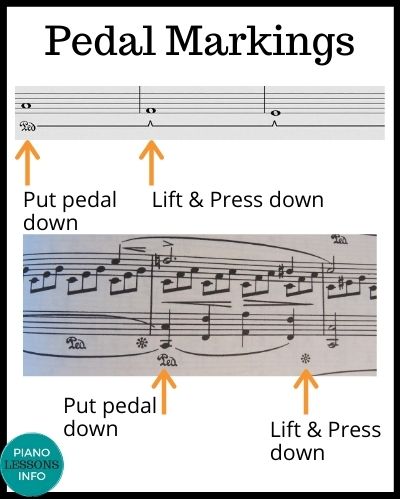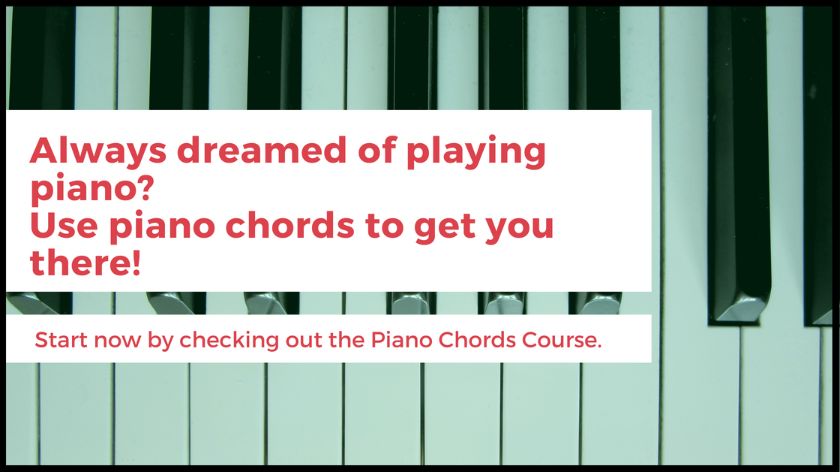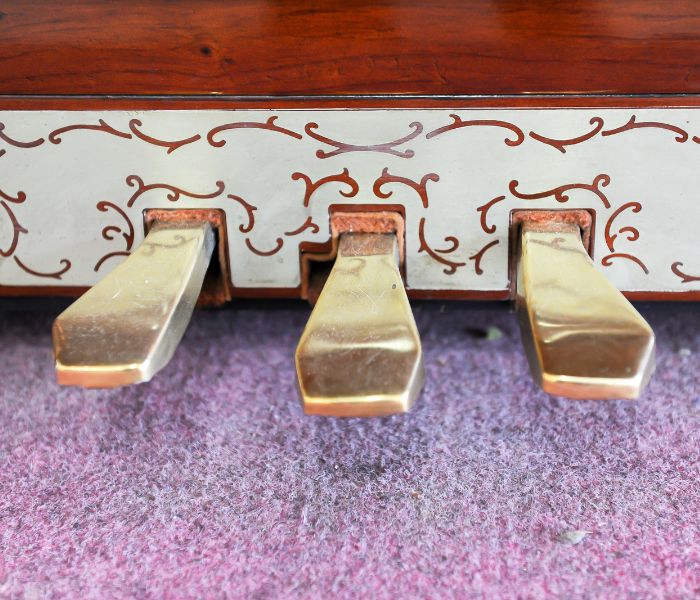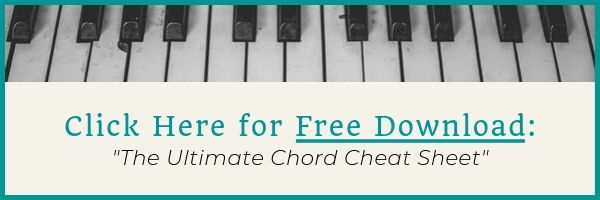When To Use the Piano Pedal
When you start learning piano, one of the important things to learn is when to use the piano pedal. It's one thing to know how to use the pedals, but when is another matter.
Here we'll be talking about when to use both the quiet pedal and the damper or sustain pedal.
Video Lesson: When To Use Piano Pedals
When To Use the Damper / Sustain Pedal
When To Use Pedal with Classical or Sheet Music
Using the pedal with classical or written sheet music can be somewhat straight forward.
With classical music, the general rule is to use the pedal in music from the Romantic Era onwards. Basically around the 1800s on. Music written by Beethoven is sometimes used with pedal and sometimes not.
You use the pedal with slow, lyrical songs and those intended to have notes joined together.
You don't want to use the pedal here:
- staccato notes (very short)
- detached notes or styles

Some music will tell you when to use the pedal, like in the markings above. Others won't and you need to use your ears and change pedal when needed. (You can learn more on how to use the pedal here.)
When To Use Pedal with Chords
Now when it comes down to when to use the piano pedal while playing chords, you can really use it most of the time.
Don't use if you're playing rhythmic, short, detached rhythms and melodies.
Do use it to play nearly everything else. It can work for slow and fast songs and why it works so well here is that it really helps the transition between chords.
You're not limited here to replicating how something was written to be played or performed, like in classical music. You can use the pedal whenever you want. It's up to your discretion here.
When To Use the Quiet Pedal
Use a quiet pedal in written music when the dynamic markings say "pp" (pianissimo) or "ppp".
It allows you to get extremely quiet, more so than you would be physically able to.
This is done by holding down the quiet pedal when indicated and lifting it once you get to piano ("p") and louder dynamic markings.
You usually find these dynamic markings in classical or written sheet music and you can use the quiet pedal when you see that.
Free Download:
Ultimate Chord Cheat Sheet

Subscribe below and get free access to the (printable) Ultimate Chord Cheat Sheet.
Recent Articles
-
Piano Notes Chart
Nov 20, 23 10:21 PM
Find a piano notes chart for treble clef and bass clef notes as well as the different types of notes. -
D Chord on Piano + Diagram, How To & Theory
Oct 24, 23 12:20 AM
Learn how to play the D chord on piano with diagram, fingering, D/A, D/F# and a theory explainer. -
Diminished Piano Chords: Chart & How to Make Them
Oct 09, 23 09:23 PM
Learn the different diminished piano chords and how to make them. Here you'll find both a diminished chord chart and an explanation.











